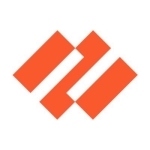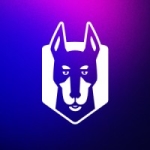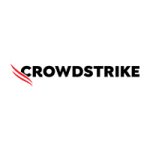Our primary use case for the product is automating the basic rollout of a VM.
Our experience with it has been very good. It's one of those things where, if you don't have to think about a product, it just does its thing, it's in the background, you don't have to worry about it, that's always handy.
We're not too complex, we're not a dot-com, but it does help us with smoothing out the variability of things. It makes it so that we can deploy things very easily. We don't use a lot of the higher features it has, but the basic things we do, we can just knock them out on a daily basis. It's not a problem to use.
The flexibility it has given us in being able to deploy things very quickly and easily, taking it from having to build up an image, and deploy something manually, which would take several hours or a day, we can do in 20 minutes; just roll out a template very easily. If we want a half-dozen different systems, we don't have to manually build them. We just point a domain to each: bang, bang, bang, done.
The solution has helped us to increase infrastructure agility, mostly because, in addition to it being able to do its thing on its own, it has tie-ins to other parts of our CI/CD pipeline. We use Jenkins for our build process which, of course, vRA has plugins for, to be able to integrate with it. We use Chef and there is the Chef build as part of our image that we standardized to deploy, and that can tie in with our section of the pipeline that it does for applications.
It has made it easier for IT to support developers because we can stand up boxes a lot quicker. We can have a test environment, we can actually just clone off something and make it a lot quicker and easier for them to deploy; quicker deployment, quicker testing, quicker into production.
The most valuable feature is that it's able to deploy several different operating systems, it's able to deploy whatever we want. We can take a template, spin it up, revise it, save it back off, and be able to have that for other departments. We can have one for our Dev team and one for our Research team which has some specific requirements. We can keep track of them and deploy things automatically.
The tool is also usable for Windows and Linux and Mac. We have people who access the tool who have different requirements. For example, I'm in Windows, but we have a Linux group that also uses the tool, and some of the people in the networking department use Macs. So it's very usable across different functional groups.
We have also found it to be intuitive and user-friendly. It's something that, because it has the workflows that are very easily graphed out - you can follow what it's doing, it's very picturesque, you can see what it's doing easily - it's something that you can hand over to a user who is not familiar with it and they can wrap their brain around it pretty quickly. The networking group, which doesn't access the finer features of VMware a lot, we give it to them. When they want to deploy a tool, they can see what it's doing very quickly. It's not something that you have to understand a scripting language for to see what it's doing.
I honestly don't see much room for improvement, but how can I take a new employee and ramp him up so he can be productive quickly? How do we get the training materials standardized so we can get him up and running really quickly?
The stability is good. It's one of those things that we can just stand up and forget. We haven't really had any problems with it. It's just there, and we can rely on it.
Scalability is one of those things we haven't used or needed. But it's there when do. We have confidence that it will meet our needs when we need them.
We haven't had to use tech support for the product. Part of that is that I do my own support. During the initial deployment, I had a few questions. We already had a VMware representative up there. So I asked him my questions. The support was good.
We have gone all the way from version 5.5 to version 8. VMware provided us the steps that we needed to do to go from this version to this version to this version, the progression we needed. From there, it was very straightforward.
I would easily give vRA a nine out of ten. It has done everything that we need. We're not the most complex use case, but it's done everything we need, we can just forget about it in the background.
It's a nine and not a ten because of the training stuff. It would be helpful to have a nice flow of training for a new employee. I'm the "old guy" of the shop and we're bringing on new people or new use cases. For example, the user-services department needs to start using it. How do we bring in new people to use its fleshed-out features, in addition to just our using it, where other departments are using it? How do we bring those people in? That's the only thing we really need.
















